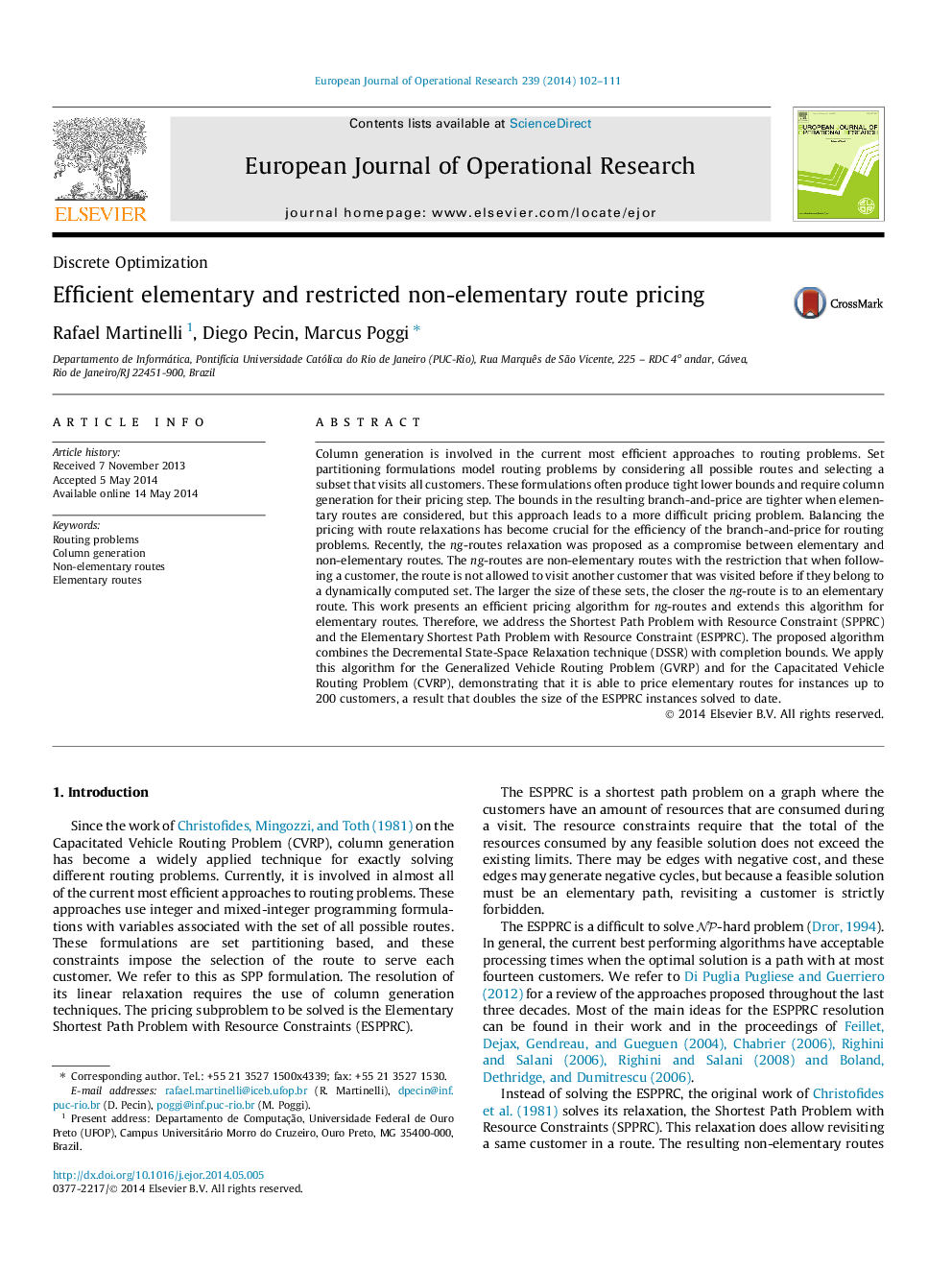| Article ID | Journal | Published Year | Pages | File Type |
|---|---|---|---|---|
| 479791 | European Journal of Operational Research | 2014 | 10 Pages |
•We propose an efficient algorithm for the SPPRC based on ng-routes relaxation.•This algorithm is extended in order to solve the more difficult ESPPRC.•We report for the first time experiments with ng-set sizes up to 64.•We solve the ESPPRC for CVRP instances with up to 200 customers.•We obtain new lower bounds and optimality proofs for several GVRP instances.
Column generation is involved in the current most efficient approaches to routing problems. Set partitioning formulations model routing problems by considering all possible routes and selecting a subset that visits all customers. These formulations often produce tight lower bounds and require column generation for their pricing step. The bounds in the resulting branch-and-price are tighter when elementary routes are considered, but this approach leads to a more difficult pricing problem. Balancing the pricing with route relaxations has become crucial for the efficiency of the branch-and-price for routing problems. Recently, the ng-routes relaxation was proposed as a compromise between elementary and non-elementary routes. The ng-routes are non-elementary routes with the restriction that when following a customer, the route is not allowed to visit another customer that was visited before if they belong to a dynamically computed set. The larger the size of these sets, the closer the ng-route is to an elementary route. This work presents an efficient pricing algorithm for ng-routes and extends this algorithm for elementary routes. Therefore, we address the Shortest Path Problem with Resource Constraint (SPPRC) and the Elementary Shortest Path Problem with Resource Constraint (ESPPRC). The proposed algorithm combines the Decremental State-Space Relaxation technique (DSSR) with completion bounds. We apply this algorithm for the Generalized Vehicle Routing Problem (GVRP) and for the Capacitated Vehicle Routing Problem (CVRP), demonstrating that it is able to price elementary routes for instances up to 200 customers, a result that doubles the size of the ESPPRC instances solved to date.
